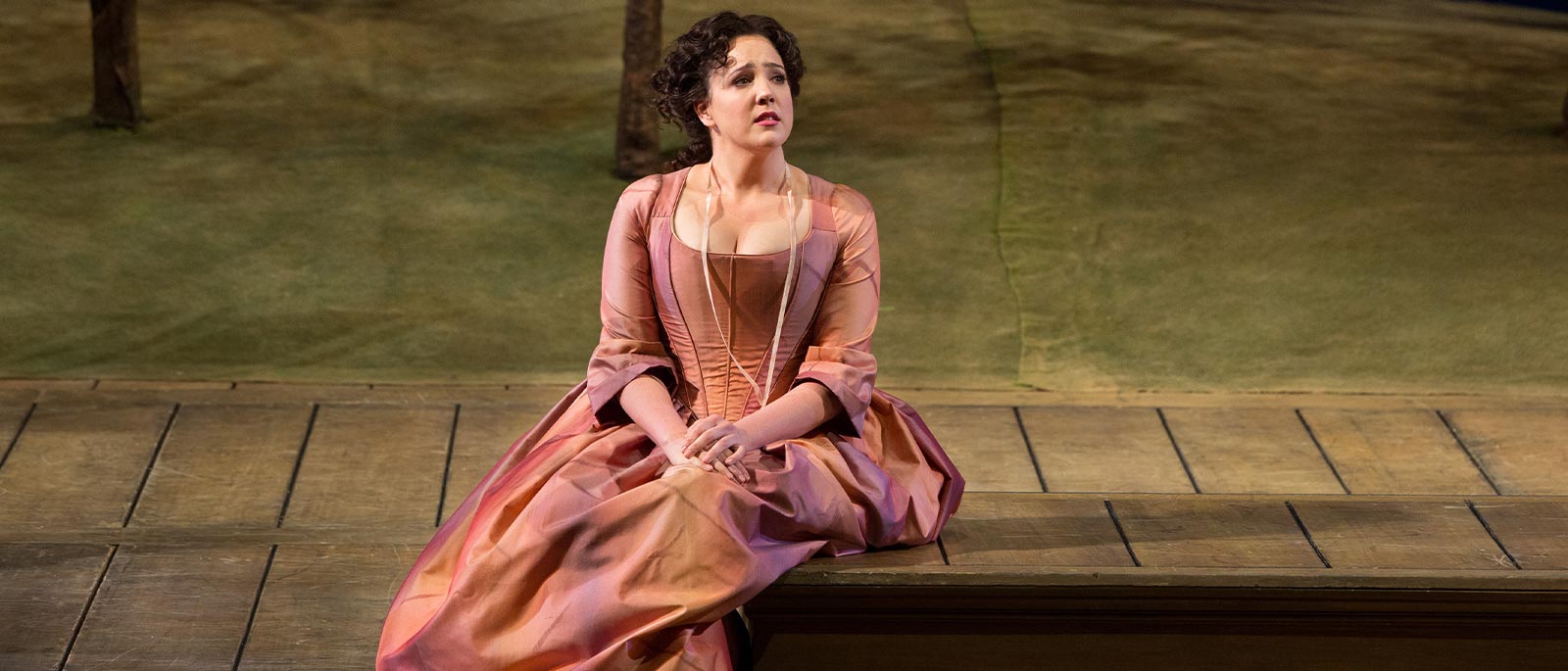
Mozart Maven
Ever since she won the National Council Auditions in 2005 with an aria from Die Zauberflöte, Susanna Phillips has dazzled audiences in the operas of Mozart on the Met stage. During the 2019–20 season, the Countess in Le Nozze di Figaro became the fifth of the composer’s heroines that the Alabama-born soprano performed with the company. Phillips recently spoke to the Met’s Christopher Browner about everything Mozart.
What is it like to perform Mozart’s operas, which are often musically and dramatically intimate, in a house as expansive as the Met?
It’s a grand experience—it’s Mozart on the big stage. Part of the beauty of his music is how flexible it is. It can be done in a variety of spaces effectively, and you will hear it in a different way in a 4,000-seat house as opposed to a much smaller space, but is that bad? No, I think it’s a good thing. It gives us perspective.
I’ve noticed in your performances of these operas that you aren’t afraid to add some subtle ornamentation to your vocal lines, which is very unusual these days in Mozart.
In Mozart’s time, it was expected that there would be ornamentation. Sometimes, when he was writing for a singer with less experience, he would write the ornamentation into the aria, but in other places, he would have left it up to the singer. The music can still be very effective without ornamentation, but sometimes it can certainly add to the emotion. And it also makes a big difference what the direction of the scene is. Ornamentation can really help steer the character toward a particular direction.
How do you decide what ornaments to add?
The conductor certainly has an opinion about whether to include ornamentation at all, but if I am ornamenting, it must come organically. So it changes from performance to performance. If it doesn’t feel honest one night, I won’t do it. Or if a slightly different gesture feels more honest, then I’ll try something different.
I would imagine that you also find that kind of flexibility in the speech-like style of the recitatives.
The recits are where all the action happens. They have a far less musical structure, so you can mold them into anything you want. You can have some that may be playful, but at the same time, just by changing the tempo or the dynamics, they become tremendously sincere. And the beauty of experience in a role is exploring many different ways of approaching the same lines.
How spontaneous can you really be from performance to performance?
Very. When I sang Donna Elvira with Peter Mattei, who’s just an absolutely brilliant Don Giovanni, every performance was completely different. The way we interpreted our characters wasn’t different, but we played with each other in the recits to keep it fresh. Some phrases would be sent as a jab and some would be sent as a gesture of reconciliation. And then they would flip in the next performance. When you’re very familiar with the part, you don’t have to be as safe and as careful, and that makes for great drama.
We don’t often think of opera offering such a level of spontaneity.
But that’s the beauty of Mozart. One of the difficult things about a lot of opera is that you’re trying to get hundreds of people to make a musical gesture at the same time in the same way. It’s like moving a huge cruise ship. Whereas in a Mozart recit, it’s just you and the harpsichordist and maybe your scene partner. You can move with much more agility and almost improvise with each other.
Christopher Browner is the Met’s Associate Editor.